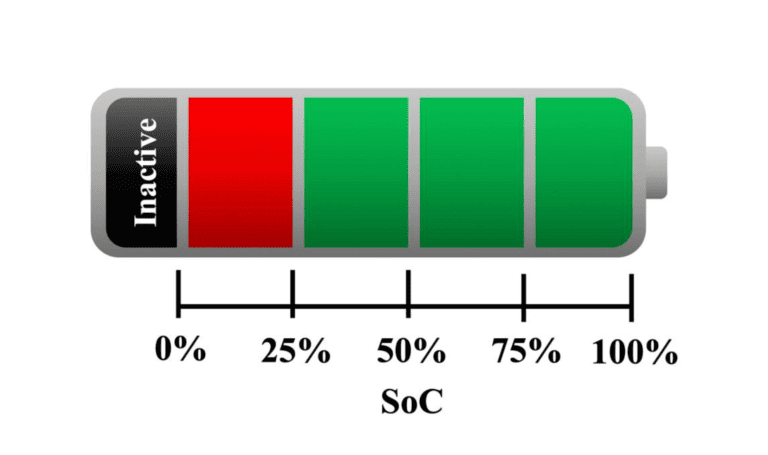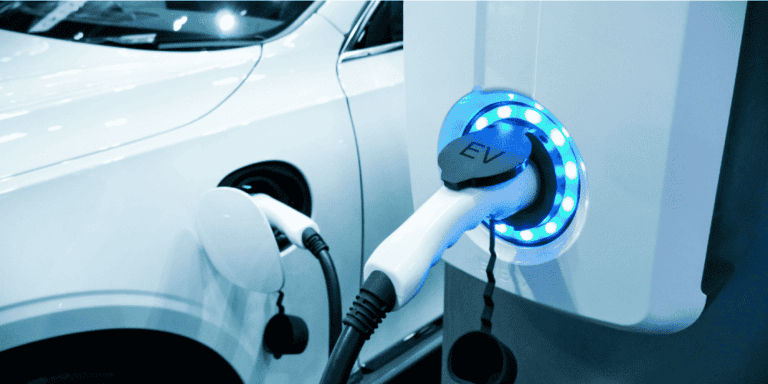Five Factors That Affect your EV Charging Speed

Understanding the elements which affect charging speed is crucial as electric vehicles (EVs) gain mainstream. The amount of time it takes to charge your EV relies on many variables, such as the battery’s level of charge, temperature, other loads that are in use, battery deterioration, and the current and voltage limitations of your vehicle. If you comprehend these factors and how they impact your charging experience, you may decide when and where to charge your EV knowledgeably. We’ll discuss each of these Factors That Affect Your Charging Speed in detail and provide guidance on how to boost your EV charging experience in this article.

When you charge your electric vehicle, the state of charge (SoC) indicates how full the battery is. The charging rate decreases as the SoC increases because the battery can get damaged from overcharging. To avoid this, the charging rate drops when the battery gets close to its maximum capacity.
For instance, if your electric vehicle (EV) has a 100 kWh battery pack and you start charging at 50% SoC, the battery will gain 50 kWh. However, the battery will only get 20 kWh of energy when charging begins at 80% SoC, and the amount charged will slow as the battery addresses 100% SoC.
Start charging your EV battery while its SoC is lower to maximize charging speed. By doing this, you can take advantage of the faster charging rates offered by less expensive SoCs and reduce the time needed to charge your EV completely. Remembering this is essential, though, that you should still attempt to charge your electric vehicle to a level that accommodates your driving requirements to prevent running out of battery power on the road.
The battery temperature in your EV may also affect how quickly you charge. High or low-temperature charging might reduce charging effectiveness and even harm the battery.
The best conditions for charging are at temperatures between 50°F and 86°F (10°C and 30°C), which enhance battery health and charging efficiency. If the battery is excessively cold, below 50°F (10°C), it absorbs energy more slowly, which could cause the charging rate to decrease. The charging rate may slow down even further if the battery gets very hot, exceeding 86°F (30°C), as high temperatures may reduce charging efficiency and raise the possibility of battery damage.
It’s best to park your electric car in a shaded place or garage when charging in hot weather to keep the battery cool. If it’s cold outside and you need to recharge your car, start the procedure while it’s still warm. Alternatively, you can use the pre-conditioning function of the EV app to warm up the battery before charging. By doing this, you may contribute to ensuring optimum charging efficiency and battery health.
All batteries deteriorate over time, which could affect how rapidly they charge. A natural phenomenon called battery degradation occurs when a battery gets charged and drained repeatedly. Numerous variables, such as battery chemistry, usage habits, and environmental conditions, influence the rate of battery deterioration.
Optimizing charging speed depends on keeping the battery in your electric vehicle in good condition. It includes keeping your EV charged to a level appropriate for your driving needs and avoiding prolonged discharges, which can speed up battery deterioration. Additionally, since high or low temperatures can speed up battery deterioration, it’s crucial to adhere to the manufacturer’s instructions for battery care and keep your EV out of the extremes.
If you notice that your EV charges more slowly than usual, the battery may be deteriorating. In this situation, it may be necessary to have your battery inspected and serviced by an experienced technician to ensure maximum charging efficiency and battery health.

Using your EV’s air conditioner or headlights while it is on charge can cause the procedure to take longer. It is because the electrical load created by these accessories competes with the charging process and could make it slower.
Reduce other electrical loads as much as possible when charging your EV to increase charging speed. For instance, turn off your air conditioning or hardly use it occasionally if you are parked and charging your EV in a warm place. Related to turning off inside lights and headlights when charging your EV at night, you can save electricity by doing so.
A feature known as smart charging, which enables the charging rate to be automatically adjusted based on available electrical capacity and other loads, is included in some EVs and is worth mentioning. This feature can help optimize charging efficiency while lowering the chance of electrical system overload.
Your EV’s current and voltage limitations also affect how quickly it can charge. These limitations vary depending on the brand and type of your EV and may affect the fastest charging speed that it is capable of.
Choose a charging station that is suitable for the current and voltage limitations of your EV to maximize charging speed. If the maximum charging rate for your EV is 50 kW, for instance, you should choose a charging station that can deliver at least 50 kW of charging power. Choose a charging station that can handle your EV’s maximum charging rate to succeed at the fastest charging speed.
Finally, for a better EV charging experience, it’s essential to understand the factors that affect your EV’s charging speed. By considering the state of charge, temperature, other loads, battery deterioration, and your vehicle’s current and voltage restrictions, you can decide when and where to charge your EV.
The state of charge, temperature, other loads, battery deterioration, and the current and voltage limitations of your vehicle are all elements that might influence how quickly your EV charges. Optimizing the charging process and being aware of factors can ensure quick and effective charging for your EV.
To sum up, it’s crucial to keep your electric vehicle’s battery at an acceptable level of charge, charge it at a comfortable temperature, reduce other electrical demands while charging, maintain the battery’s health, and choose a charging station that meets your EV’s voltage and current requirements.
These recommendations will help you charge your EV more quickly and ensure that you will have sufficient power for your journey. It’s essential to stay informed about best practices to get the most out of your EV, and as EV technology evolves, new factors that impact charging speed may arise.
